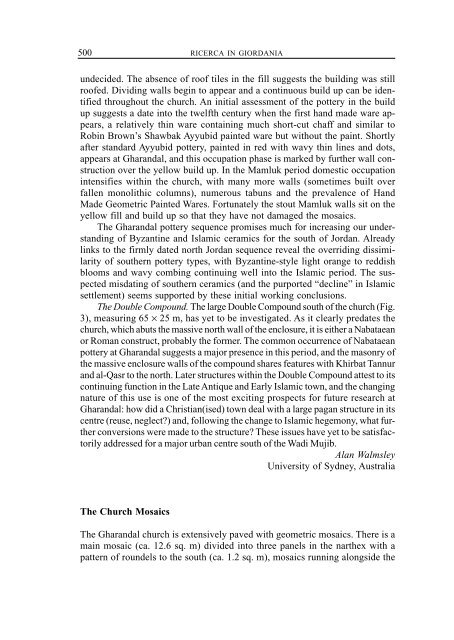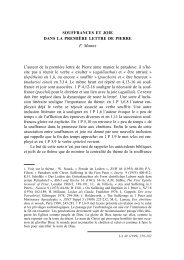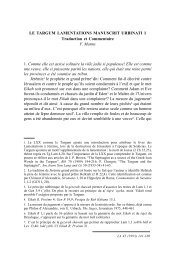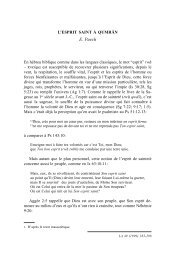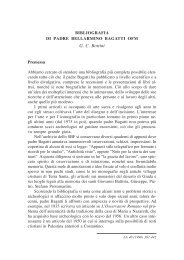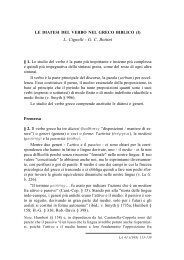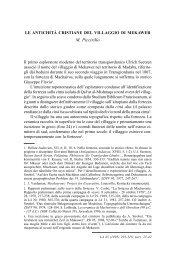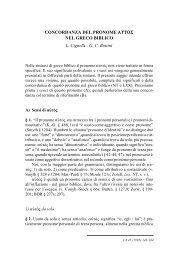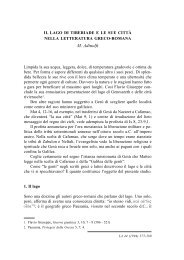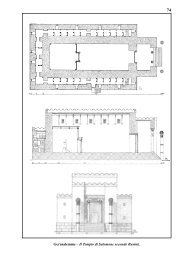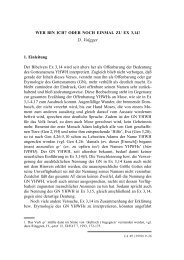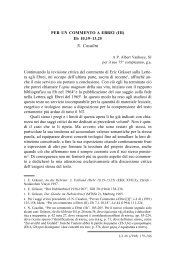Ricerca storico-archeologica in Giordania XVII – 1997
Ricerca storico-archeologica in Giordania XVII – 1997
Ricerca storico-archeologica in Giordania XVII – 1997
You also want an ePaper? Increase the reach of your titles
YUMPU automatically turns print PDFs into web optimized ePapers that Google loves.
500<br />
RICERCA IN GIORDANIA<br />
undecided. The absence of roof tiles <strong>in</strong> the fill suggests the build<strong>in</strong>g was still<br />
roofed. Divid<strong>in</strong>g walls beg<strong>in</strong> to appear and a cont<strong>in</strong>uous build up can be identified<br />
throughout the church. An <strong>in</strong>itial assessment of the pottery <strong>in</strong> the build<br />
up suggests a date <strong>in</strong>to the twelfth century when the first hand made ware appears,<br />
a relatively th<strong>in</strong> ware conta<strong>in</strong><strong>in</strong>g much short-cut chaff and similar to<br />
Rob<strong>in</strong> Brown’s Shawbak Ayyubid pa<strong>in</strong>ted ware but without the pa<strong>in</strong>t. Shortly<br />
after standard Ayyubid pottery, pa<strong>in</strong>ted <strong>in</strong> red with wavy th<strong>in</strong> l<strong>in</strong>es and dots,<br />
appears at Gharandal, and this occupation phase is marked by further wall construction<br />
over the yellow build up. In the Mamluk period domestic occupation<br />
<strong>in</strong>tensifies with<strong>in</strong> the church, with many more walls (sometimes built over<br />
fallen monolithic columns), numerous tabuns and the prevalence of Hand<br />
Made Geometric Pa<strong>in</strong>ted Wares. Fortunately the stout Mamluk walls sit on the<br />
yellow fill and build up so that they have not damaged the mosaics.<br />
The Gharandal pottery sequence promises much for <strong>in</strong>creas<strong>in</strong>g our understand<strong>in</strong>g<br />
of Byzant<strong>in</strong>e and Islamic ceramics for the south of Jordan. Already<br />
l<strong>in</strong>ks to the firmly dated north Jordan sequence reveal the overrid<strong>in</strong>g dissimilarity<br />
of southern pottery types, with Byzant<strong>in</strong>e-style light orange to reddish<br />
blooms and wavy comb<strong>in</strong>g cont<strong>in</strong>u<strong>in</strong>g well <strong>in</strong>to the Islamic period. The suspected<br />
misdat<strong>in</strong>g of southern ceramics (and the purported “decl<strong>in</strong>e” <strong>in</strong> Islamic<br />
settlement) seems supported by these <strong>in</strong>itial work<strong>in</strong>g conclusions.<br />
The Double Compound. The large Double Compound south of the church (Fig.<br />
3), measur<strong>in</strong>g 65 × 25 m, has yet to be <strong>in</strong>vestigated. As it clearly predates the<br />
church, which abuts the massive north wall of the enclosure, it is either a Nabataean<br />
or Roman construct, probably the former. The common occurrence of Nabataean<br />
pottery at Gharandal suggests a major presence <strong>in</strong> this period, and the masonry of<br />
the massive enclosure walls of the compound shares features with Khirbat Tannur<br />
and al-Qasr to the north. Later structures with<strong>in</strong> the Double Compound attest to its<br />
cont<strong>in</strong>u<strong>in</strong>g function <strong>in</strong> the Late Antique and Early Islamic town, and the chang<strong>in</strong>g<br />
nature of this use is one of the most excit<strong>in</strong>g prospects for future research at<br />
Gharandal: how did a Christian(ised) town deal with a large pagan structure <strong>in</strong> its<br />
centre (reuse, neglect?) and, follow<strong>in</strong>g the change to Islamic hegemony, what further<br />
conversions were made to the structure? These issues have yet to be satisfactorily<br />
addressed for a major urban centre south of the Wadi Mujib.<br />
Alan Walmsley<br />
University of Sydney, Australia<br />
The Church Mosaics<br />
The Gharandal church is extensively paved with geometric mosaics. There is a<br />
ma<strong>in</strong> mosaic (ca. 12.6 sq. m) divided <strong>in</strong>to three panels <strong>in</strong> the narthex with a<br />
pattern of roundels to the south (ca. 1.2 sq. m), mosaics runn<strong>in</strong>g alongside the


